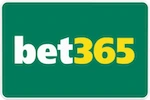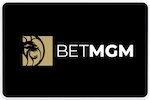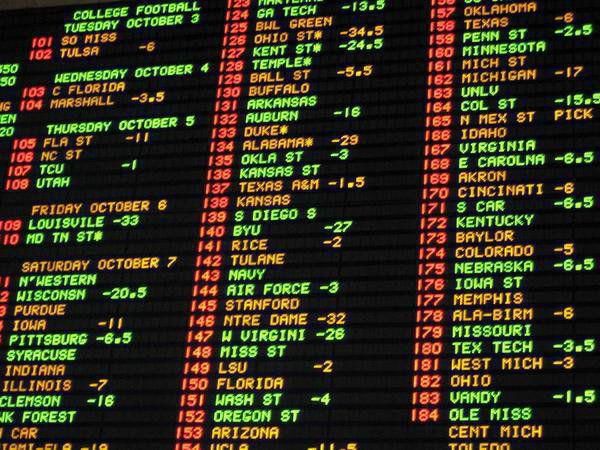For beginning sports bettors, moneylines can be intimidating, but once you understand the essentials, they’re just as easy to use as the point spread. While point spread bets are not solely determined by which team wins with the margin of victory coming into play, moneyline wagers are only settled based on who wins.
How A Moneyline Bet Works
The best way to explain the moneyline is to show an example of it in action, so let’s look at a hypothetical MLB game between the New York Mets and the Los Angeles Dodgers. With baseball and combat sports being the most frequently bet sports on the moneyline, they are sound examples. When looking at the odds for the game, the bettor will see something similar to:
- New York Mets +130
- Los Angeles Dodgers -140
In this instance, the Dodgers are the favored team, as signified by the – (minus) sign in front of the 140, while the Mets are the underdogs, as designated by the + (plus) sign in front of the 130. These numbers mean that those wishing to bet on the favorite, the Dodgers, will have to risk $140 to win $100, while those wanting to wager on the underdog, the Mets, will risk $100 to win $130.
Again, you don’t have to wager that much money; odds are typically given based on $100 wagers for the reason of simplifying things. The amount wagered and to win stay the same regardless of the amount of the bet, as both values are adjusted proportionally to what a player puts down.
As the odds of the favorite winning become greater, the difference between the odds on the favorite and the odds on the underdog will become more pronounced. For example, if the Dodgers are playing the Twins, we might see the following:
- Minnesota Twins +190
- Los Angeles Dodgers -220
In this case, a bettor would be able to risk $220 to win $100 if they were betting on the Dodgers, while Minnesota bettors would be risking $100 to win $190.
The difference between the favorite and underdog will continue to climb as the perceived gap between the favorite and the underdog increases. Combat sports use moneyline odds as well, and we sometimes see much larger moneyline disparities between fighters. In a UFC matchup, it wouldn’t be unusual to see odds such as:
- Valentina Shevchenko -1100
- Lauren Murphy +700
Here, those betting on Shevchenko would risk $1,100 to win $100, while those taking Murphy would risk $100 to win $700.
Explaining the Gap in Moneyline Odds
The reason there is a variable difference between favorite and underdog odds is that bet splits on moneyline wagers can be much more heavily skewed to one side or the other than with other bet types. In point spread betting, the sportsbook hopes to have an equal amount of money wagered on each team, which will guarantee a profit. In moneyline betting, the oddsmaker realizes that more people will wager on one side or the other and can only hope to have enough wagered on each side to protect themselves from any liabilities.
Using the Shevchenko vs Murphy fight as an example, a sportsbook expects more money to be wagered on Shevchenko, as she has a much greater chance of winning the fight than Murphy. If 20 bettors collectively wager $22,000 on Shevchenko, the bookmaker hopes to receive $2,000 in wagers on Murphy from 20 other bettors. If Shevchenko wins as expected, the bookmaker will have the $2,000 on hand from the losing Murphy bettors and pay off the winners ($100 will go to the 20 bettors). However, if Murphy pulls off the upset and wins, the bookmaker will take the $22,000 from the losing Schevchenko bettors and pay off $14,000 to the winning Murphy bettors and still have $8,000 of the handle for its efforts.
Moneyline betting is generally offered on all sporting events, even those that use the point spread, such as football and basketball. A 3-point favorite in an NBA game will likely be in the neighborhood of a -160 favorite on the moneyline. The underdog will be around +140. You can always bet either way; the moneyline simply gives the bettor another option in deciding whether or not to make a wager.
Where To Bet on Moneyline Odds
There are several sportsbooks worth checking out for moneyline betting and we have compiled a list of those sportsbooks below. Bettors are encouraged to sign up for as many of these online sportsbooks as they wish, as doing so will allow them to compare moneyline odds and place bets at the site that has the best price for each bet they wish to make. Just click the Claim Offer buttons below to claim your new player bonus at these top sports betting sites.






More Sports Betting Topics
- Sports Betting Dictionary, Terminology & Bet Types Meanings
- 4 Tips For Making Successful Bets
- Basketball Betting Guide – How To Bet On Basketball
- What Are First Half and Halftime Bets?
- Parlay Sports Betting
- What Are Prop Bets – How To Bet Proposition Bets
- Pleaser Sports Betting
- Teaser Betting
- Over Under Betting
- Point Spread & Betting Lines Explained
- What is Against the Spread
- What Does -110 Mean In Sports Betting? Betting Odds Explained
- What is Reduced Juice Betting?
- Bet To Risk vs Bet To Win – Wager Amount vs Risk Amount
- How To Read Rotation Numbers & Sports Betting Odds
- What Is a Progressive Parlay? How To Bet Progressive Parlays
- 3-Way Money Line

